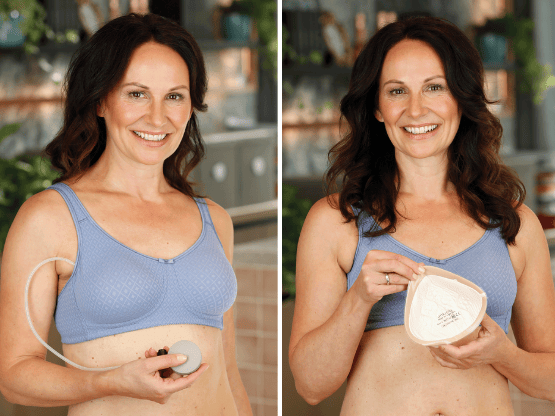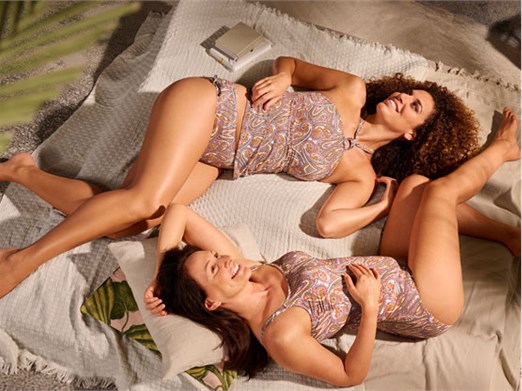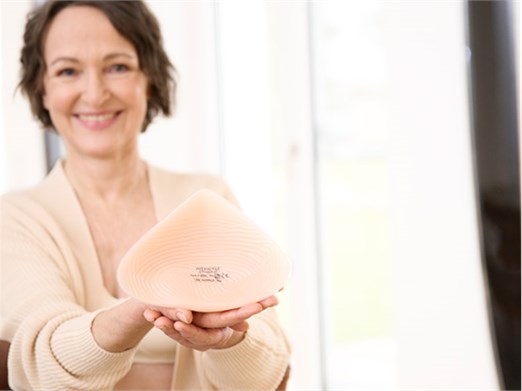The Mystery in your Makeup Bag
How concerned should you be about “all-natural” and organic cosmetics?
It is rarely discussed, but the early Japanese geisha's, known the world over for their exquisite beauty and striking, artistic faces, used all-natural make-up.
White lead.
Their flawless foundation was all-natural, all right – lead is found in small amounts in plants, animals, air, water, dust and the earth’s crust. It is also, we now know, a documented carcinogen.
An extreme illustration, perhaps, but it helps underscore the point that sometimes “all-natural” doesn’t mean the same thing as “superior.” Alison Raffaele Tatem, Founder and Chief Creative Officer of Alison Raffaele Cosmetics, keeps that in mind as she navigates today’s changing landscape in personal beauty and cosmetics products.
“As a make-up artist, I always felt that if you put something on your skin that’s going to harm you, it’s not going to make you beautiful. So in 2000, when I started making my own cosmetics using traditional formulas, I also started watching the parabens debate,” Raffaele explains.
Cultural concerns
Discoveries were just being made at that time connecting parabens – synthetically-produced chemical preservatives widely used for their antibacterial and anti-fungal properties – with breast cancer. Parabens’ ability to slightly mimic estrogen was cause for concern, since some breast cancer cells depend on the hormone for growth.
As of our publication date, there have been no conclusive studies to support this connection. However, it remains a front-page topic for many concerned about their health, largely due to frequent Internet postings, the increased visibility of health-minded watchdog groups and the strength of the organic/sustainable movement in food and fashion.
Make-up and personal products manufacturers, including Raffaele, have kept pace, after finding conclusive evidence that other types of preservatives could be used instead.
Did You Know? Amoena’s own Soft Cleanser and Skin Preparation Wipes have also been reformulated and are now manufactured free of polyethyleneglycol (PEG) and PEG derivatives, dyes and parabens. |
|---|
Ever-turning rumour mill
Because we’re hearing so much about this issue in the American media, it’s easy to confirm any ingredient suspicion (whether or not it is founded in fact) with a quick Google search. Sensation sells, and therefore bloggers, magazines and other media outlets are willing to publish stories that may cause eyebrows to rise. In addition, there is no official governing body for cosmetics – the FDA does not test cosmetics for pre-market approval and does not require manufacturers to register their facilities or ingredient lists – so the field is left open without universal benchmarks.
On the other hand, the American Cancer Society reminds readers on its website, “Consumers should be aware that there is no evidence that cosmetic products labelled as "natural,""organic" or "green" are in fact safer than products that do not carry these labels.” And the Personal Care Products Council, the leading national trade association representing the global cosmetic and personal care products industry, released a statement in March, 2012 that says,“Equating the mere presence of certain chemicals in products with potential harm is wrong and needlessly scares consumers about products formulated with ingredients that have a wealth of scientific data to support their safety.”
As a result, consumers really must choose for themselves. Should we regard our make-up as “innocent until proven guilty” as we have for hundreds of years, or the other way around? Neither approach is necessarily wrong, and it doesn’t have to be all or nothing. (Of course, it can be nothing – any woman can choose to give up beauty products altogether if she is truly unwilling to take any risk.)
Trying to do the right thing
Another resource, The Breast Cancer Fund is trying to help “expose and eliminate the environmental causes of breast cancer,” and its notable effort includes the well-known Campaign for Safe Cosmetics. This broad coalition is driving public action on the issue and helping a lot of consumers make choices about the products they buy. If you do choose to lean toward more organic and natural products, you have more and more options.
However, it is still somewhat difficult to find products that are completely “clean” and do their job. Raffaele gives an example: “It’s really hard to get clean mascaras that won’t run right off your face.” She recommends small steps. “Skincare has made greater strides than colour cosmetics. Pigmenting and wear-time still have a ways to go in terms of improvements.” So start with your personal care products – lotions, deodorants and shampoos – to get the most benefit right now.
A good rule of thumb, according to the creators of DirtyBeauty.com, is to remain as close as you can to the ground. “Our skin has needs and natural functions that keep it pretty,” shares Samantha Dickey, the company’s founder. “We just have to supply it with building blocks so it can work for us. The sun and soil provide these blocks to plants, and plants provide them to us. Just like in food, we get the most [benefit] from plants that are ‘just picked.’”
Dickey suggests several ingredients that make-up and beauty consumers should definitely look for:
- SPF. Too much sun is the main cause of early signs of skin aging; SPF helps to protect us from overexposure.
- Antioxidants. Vitamins A, C, and E are antioxidants and can be found in natural ingredients like green tea extract and shea butter. They help prevent toxins (like skin overexposure) from damaging healthy cells.
- Essential Fatty Acids (EFAs) are literally ‘oily acids’ that are ‘essential’ for moist, soft skin. Our human bodies cannot make EFAs; we have to get them from plants. Some sources include shea butter, cocoa butter, mango butter, soybean oil and olive oil.
Keep in mind: looking good can help you heal
It’s especially important for women who are just beginning their breast cancer journeys to not make an enemy of beauty products. During chemotherapy, in particular, feeling like yourself – feeling pretty – can even influence your response to treatment. In the book Beauty Pearls for Chemo Girls, readers are reminded that looking good makes you feel better: “Care about your physical self, your emotional self, and your spiritual self,” the authors urge. “It’s not only a way to retain normalcy during sickness… refusing to give in to illness is an act of hope and courage.”
Most important, Raffaele stresses, be an educated consumer. Don’t just troll the Internet; talk to your doctors. Look for scientific studies (they’re hard to find). Ask questions. Find companies you trust. If you ask them about specifics, many companies will answer, not only because they’re eager to gain your loyalty, but also because this is just the beginning of a movement. The history of cosmetics is changing right now – and most manufacturers want to lead in getting it right.








